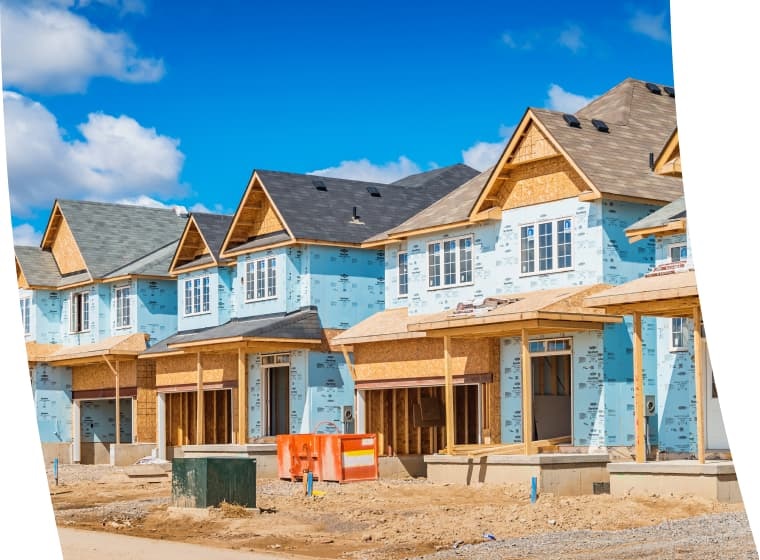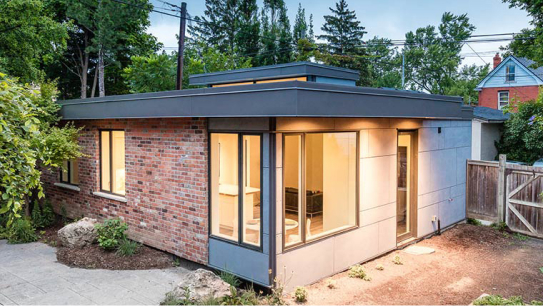Ontario’s housing supply progress
Ontario is one of the fastest growing places in North America. From July 1, 2022 to July 1, 2023, we grew by nearly half a million people. As Ontario grows, we need to get more homes built.
Tracking housing progress
Find out how many new homes municipalities are getting built.
Actions we have taken
These are just a few of the many actions we’ve taken to increase Ontario’s housing supply.
For renters
- Implementing a 2.5% cap in 2023, 2024 and 2025 on rent increases for rent controlled units.
- Removing the provincial portion of the HST on new purpose-built rental construction. Federal and provincial measures taken together remove the full 13% HST on qualifying new purpose-built rental housing.
- Removing obstacles to make it easier to build additional residential units as-of-right.
- Enabling municipalities to lower taxes on new purpose-built rentals.
- Bringing exemptions and discounts into effect for affordable housing units.
For municipalities
- Providing strong mayor powers to 216 municipalities to help them speed up approvals and get shovels in the ground.
- Creating the $1.2 billion Building Faster Fund to incentivize municipalities to get more homes built.
- Investing more than $315 million to help municipalities modernize and streamline their approval processes.
- Adding more adjudicators and staff at the Ontario Land Tribunal (OLT) to reduce the backlog of Ontario Municipal Board legacy cases by more than 80% and limiting third-party appeals.
- Investing $1.8 billion in housing-enabling infrastructure through the Municipal Housing Infrastructure Program and the Housing-Enabling Water Systems Fund.
- Empowering municipalities to make more vacant homes available for housing.
- Providing expedited processes for standardized housing designs under the Planning Act to help speed up approvals.
- Working with municipalities to identify and develop best practices for consultations, including multi-lingual and digital options.
- Creating new authority for municipalities to allocate and re-allocate servicing capacity.
For home-buyers and home-owners
- Prioritizing Ontario families and homebuyers by expanding the Non-Resident Speculation Tax province-wide and increasing the rate to 25%.
- Protecting new homebuyers by applying new standards to builders and increasing fines for unethical behaviour.
- Increasing gentle density so up to 3 residential units are now permitted on most residential lots, without needing a by-law amendment.
- Letting homebuyers and homebuilders decide on the number of parking spaces in new residential development near transit based on market needs.
- Supporting innovative construction methods, such as mass timber and factory-built housing.
For communities
- Committing nearly $1.7 billion in 2023-24 in community and supportive housing programs.
- Making it easier to build more affordable and non-profit housing by eliminating development-related charges for these important types of homes.
- Creating the new Homelessness Prevention Program, which simplifies access to provincial housing and homelessness supports.
- Exempting publicly-assisted universities from the Planning Act to accelerate the building of planned student housing units.
- Creating a “use it or lose it” process for approvals to address stalled development.
- Investing in local infrastructure needed to build new housing, like water, sewage services and roads.
Housing innovation guides
Guides about navigating the building process
As a homeowner, property owner or landlord, use these guides to navigate design and building processes. With these innovative approaches, we can help create more housing supply, including rental units, to make housing more affordable.
Guides about navigating innovative housing options
Fresh approaches to housing and homeownership give people more choices. Use these guides to explore different housing options.
Updated: September 08, 2025
Published: December 02, 2019


